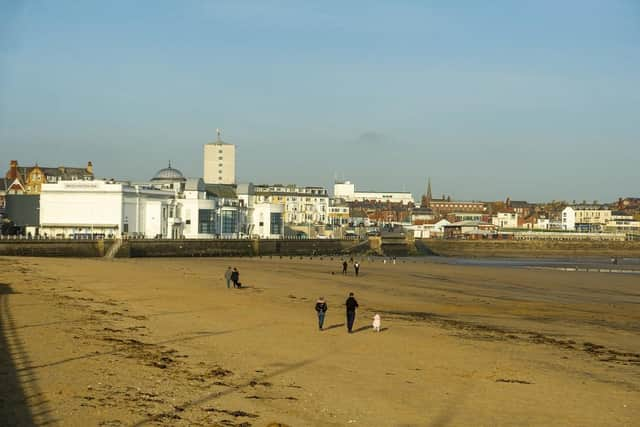Bridlington South Beach: Environment Agency investigating source of pollution at popular Yorkshire beach
In 2022, the Environment Agency rated the water quality at Bridlington's South Beach as poor and advised against bathing there.
Poor is the lowest possible rating under the EA’s classification system. It came after tests found high levels of two types of bacteria: enterococci which live in the intestinal tracts of warm-blooded animals, including humans, and E. coli which lives in the intestines and gut of some animals.
Advertisement
Hide AdAdvertisement
Hide AdSources of enterococci can include effluent from wastewater plants, leaking septic systems, stormwater runoff, sewage from boats, waste from dogs and seagulls, or agricultural manure.


Most types of E. coli are harmless, but some strains can cause diarrhea.
There is one sewer overflow which discharges into the sea near Wilsthorpe while a long sea overflow was built in 2014 by Yorkshire Water to transfer discharge from the Gypsy Race watercourse, which flows through the Wolds, 1.1km out to sea.
Part of the mystery is that seven of the eight highest findings of bacteria in 2022 were taken on days when no discharges had occurred that day or 72 hours before.
Advertisement
Hide AdAdvertisement
Hide AdYesterday a team from the EA spent the day taking samples of seawater half-hourly from Bridlington South, and hourly from North Beach – where the water quality is “good” - and the harbour. They’ll be taken to the National Laboratory Service in Exeter where they will be analysed and a report issued early next year. The team will be carrying out sampling three more times during the bathing season, which runs until the end of September.
Technical lead Claire Campbell, from the EA, said the samples provided a “snapshot in time” as the tide ebbs and flows and people come and go on the beach.
She said: “It’s an investigation which we are doing this year working with East Riding Council and Yorkshire Water to look why the bathing water dropped from ‘sufficient’ last year to ‘poor’. When we freeze the samples we can look at them in more detail and we can look for DNA markers.
